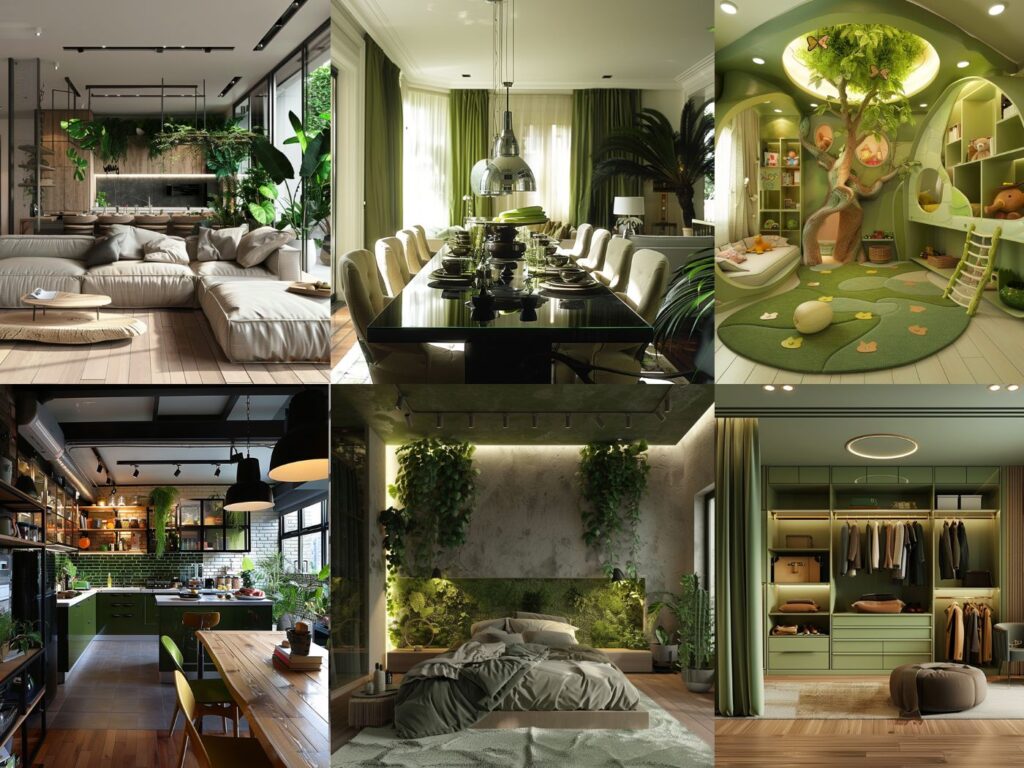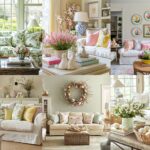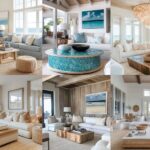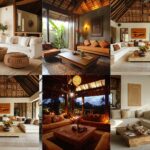Imagine transforming your home into a sanctuary that not only looks stunning but also nurtures the planet. Green Living interior design is all about creating beautiful spaces that are environmentally friendly and sustainable. With rising concerns over climate change and resource depletion, more people are seeking ways to make their homes eco-friendly without sacrificing style or comfort.
You may well be wondering how you can incorporate sustainable practices into your interior design seamlessly. From choosing non-toxic materials to integrating energy-efficient solutions, there are countless ways to create a green living space that reflects your values and aesthetic preferences.
This article will guide you through essential tips and innovative ideas for achieving an eco-conscious home that’s as kind to the Earth as it is to the eyes.
13 Green Living Interior Design Ideas And Styles For Your Eco-Friendly Space
#1. Green Living Walk-in Closet

#2. Green Living Walk-in Closet Interior Design
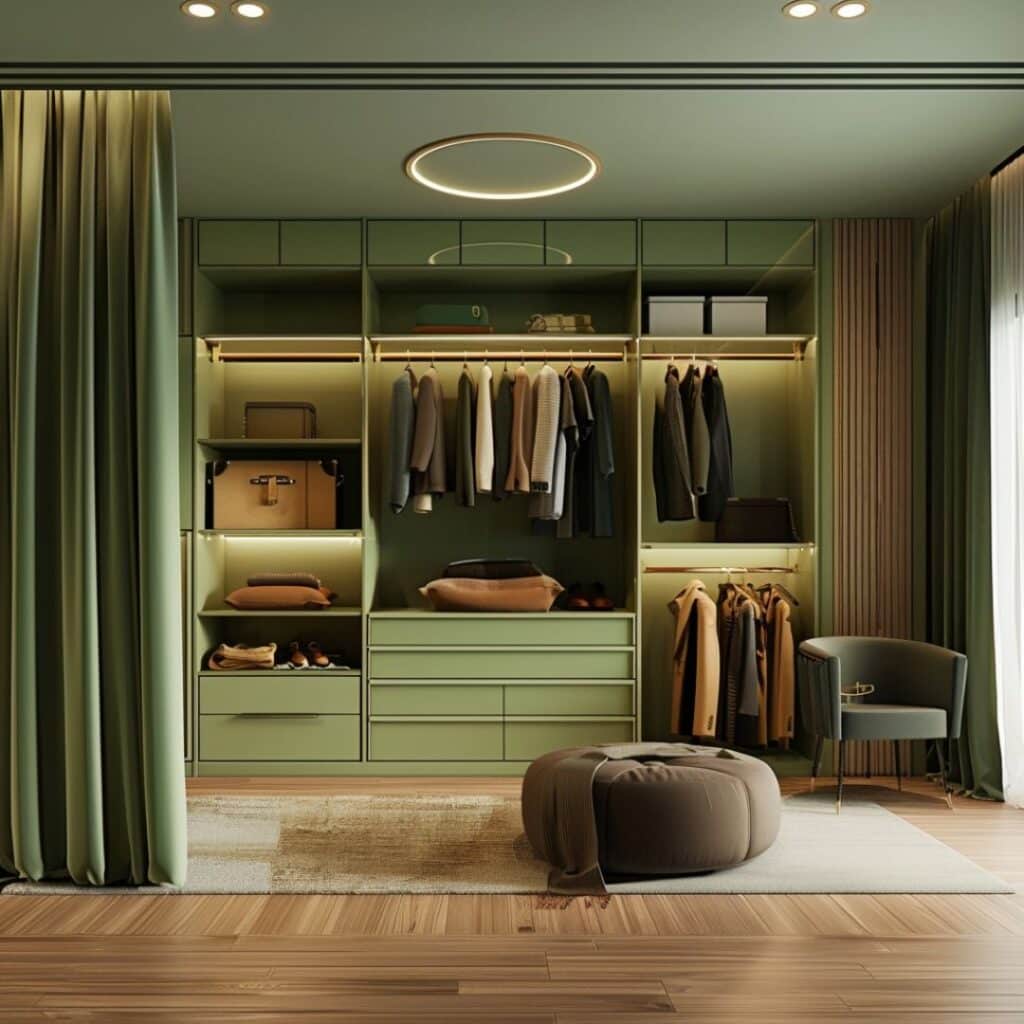
#3. Green Living Studio Apartment

#4. Green Living Living Room
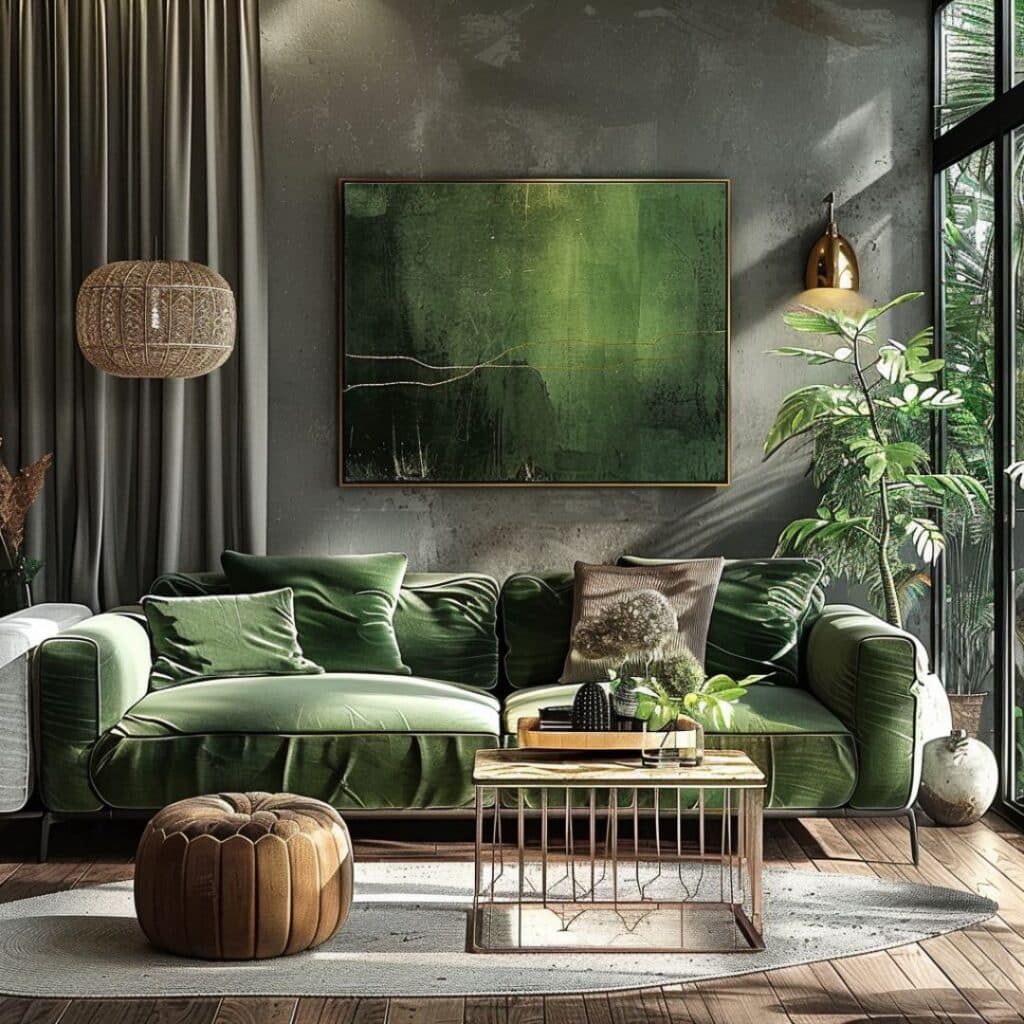
#5. Green Living Laundry Room

#6. Green Living Kitchen
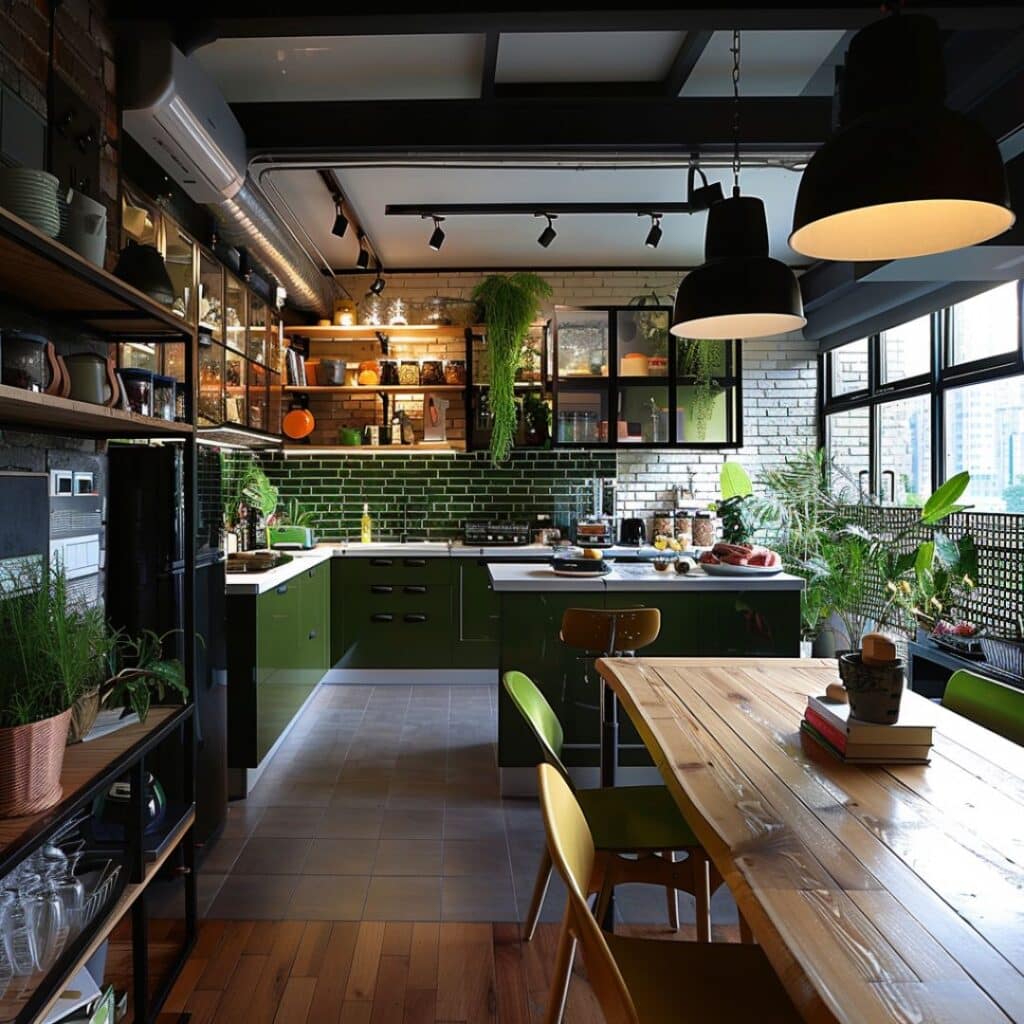
#7. Green Living Kids Room
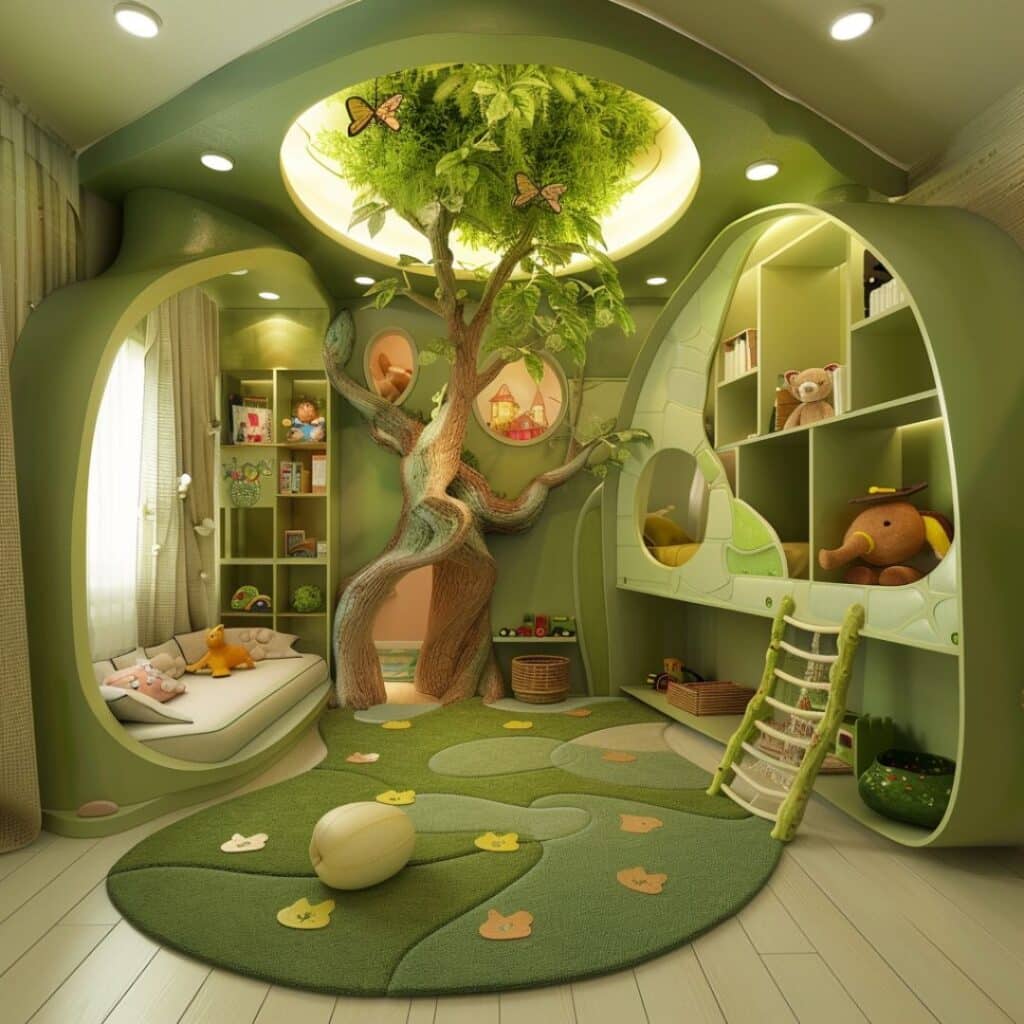
#8. Green Living Home Office
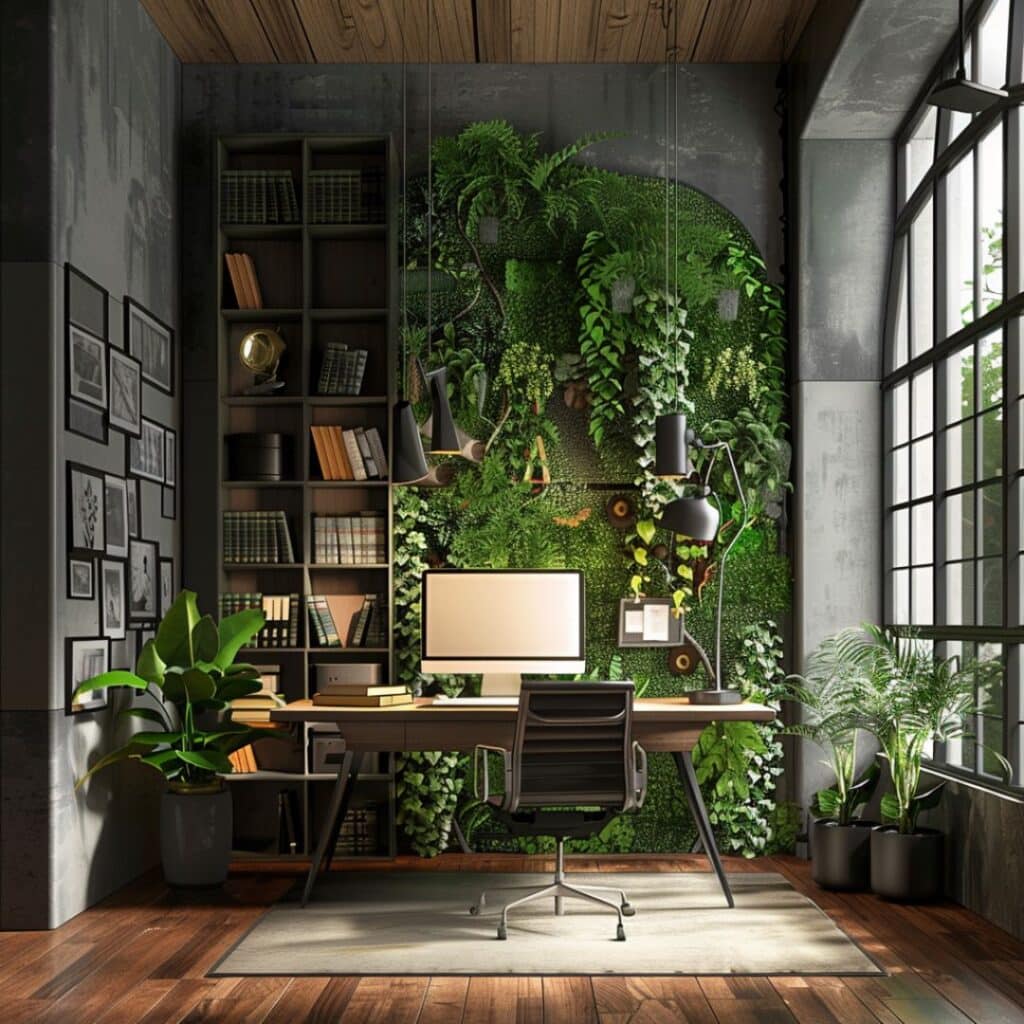
#9. Green Living Guest Bedroom
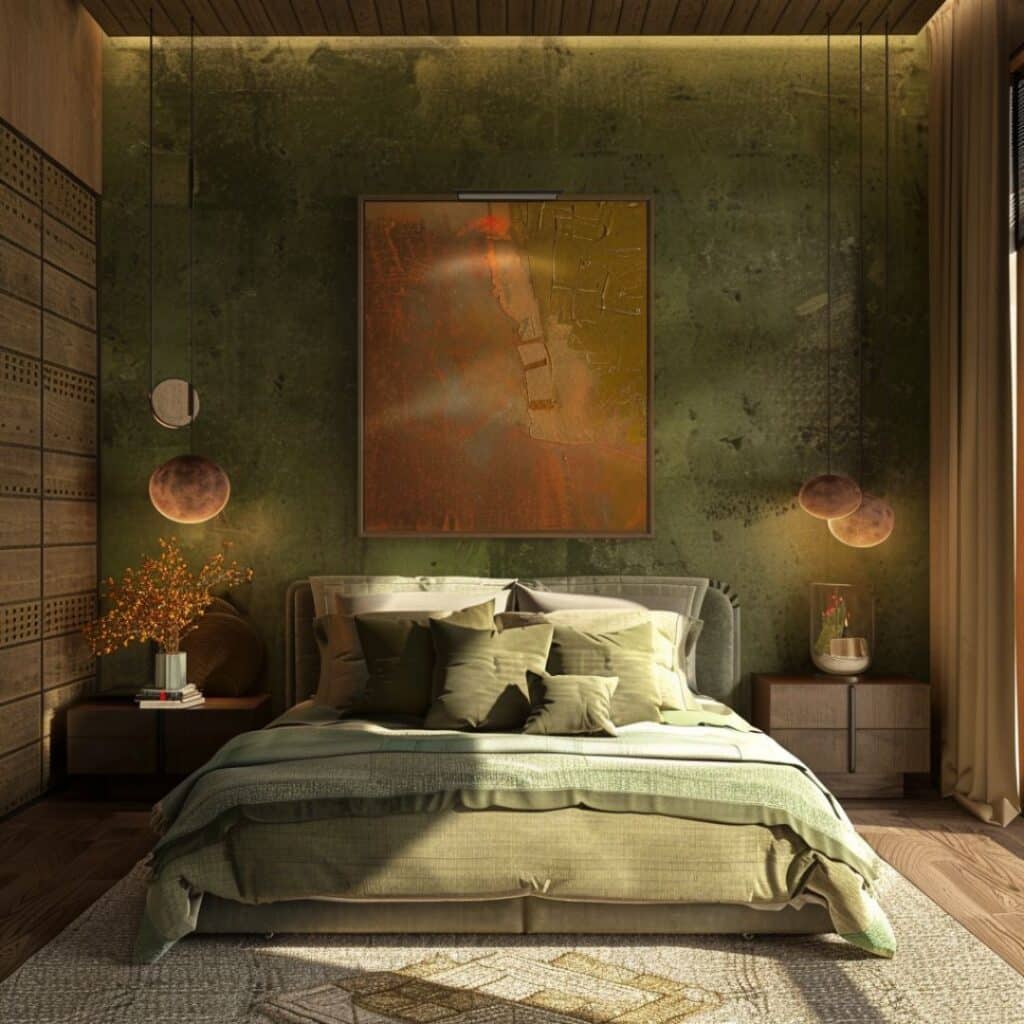
#10. Green Living Guest Bedroom Interior Design
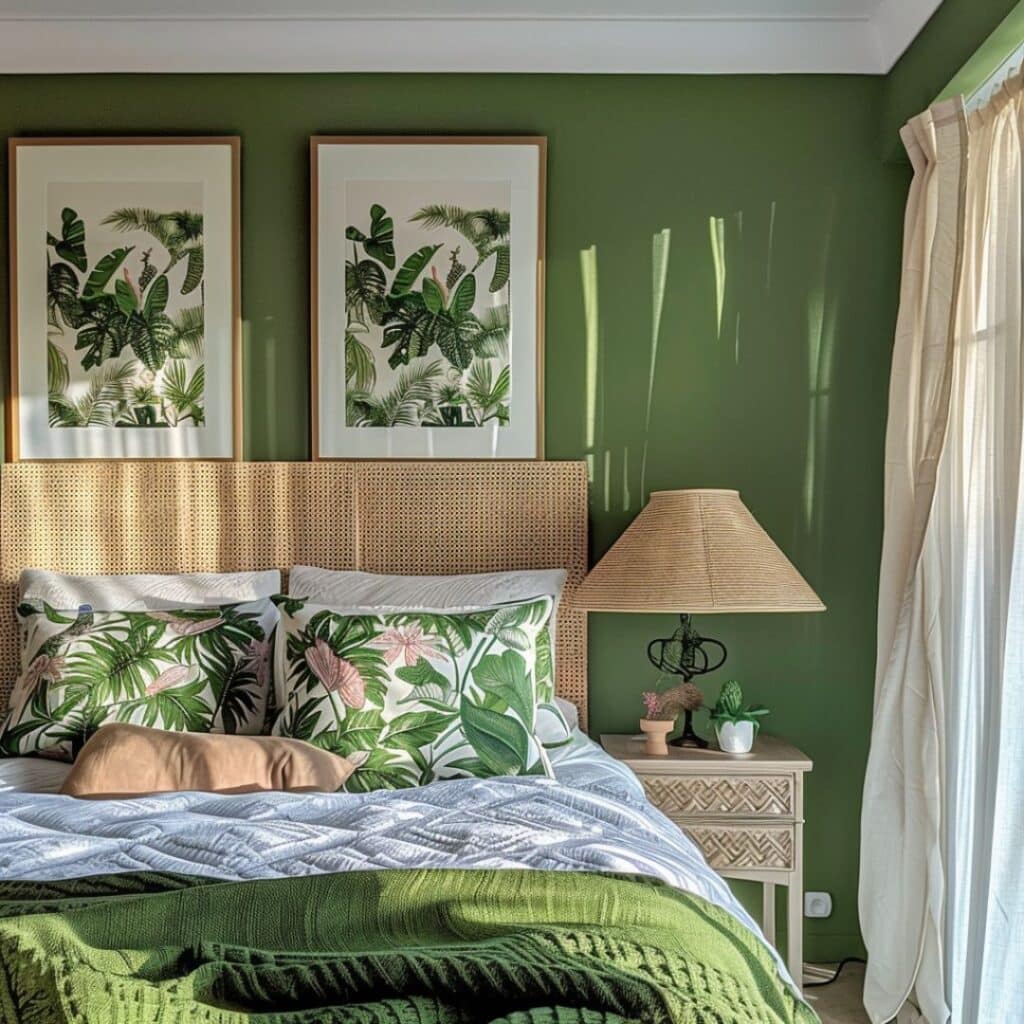
#11. Green Living Dining Room
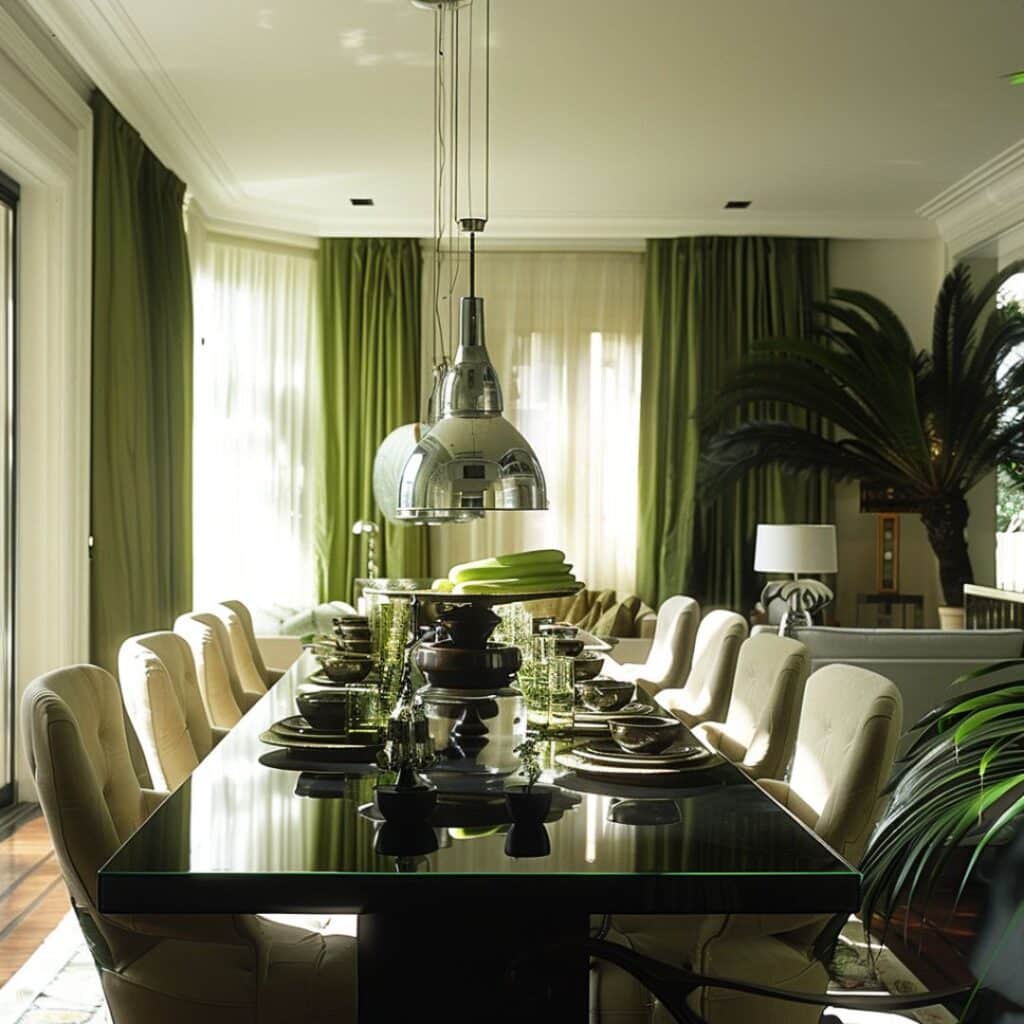
#12. Green Living Bedroom

#13. Green Living Open Kitchen Living Room
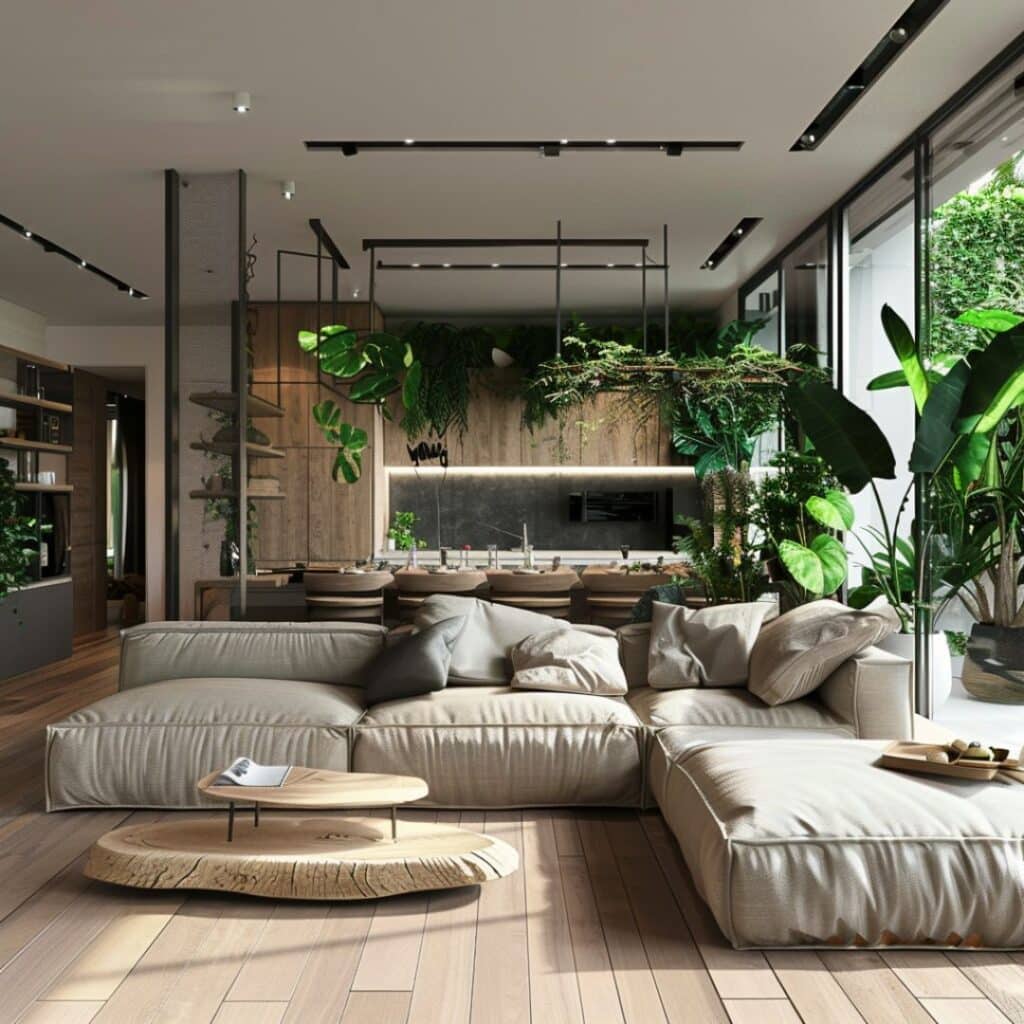
The Importance of Green Living Interior Design
Green Living interior design offers more than just an eco-friendly approach. It’s integral to creating spaces that prioritize health and sustainability.
Benefits for Health and Well-being
Eco-friendly materials reduce exposure to harmful chemicals. Non-toxic paints, natural fibers, and sustainable woods improve indoor air quality. Better air quality leads to fewer respiratory issues and allergies.
Natural lighting plays a crucial role in well-being. Energy-efficient windows maximize daylight while reducing energy consumption. More daylight reduces the need for artificial lighting, which can impact sleep patterns.
Plants also contribute significantly to health benefits. Indoor plants purify the air by removing toxins and increasing oxygen levels. They create a calming environment that reduces stress, a key element shared with Tropical interior design, which also emphasizes the use of lush greenery to create a tranquil atmosphere.
Environmental Impact
Traditional construction methods deplete resources rapidly. Sustainable practices minimize this depletion by using recycled or renewable materials like bamboo or reclaimed wood.
Energy efficiency is another critical factor. Solar panels, LED lighting, and smart thermostats lower energy consumption dramatically, reducing your carbon footprint.
Waste reduction is essential too. Recycling old furniture and repurposing items decreases landfill waste significantly. It promotes a circular economy where products are reused rather than discarded.
Green Living interior design aligns with broader environmental goals by making homes healthier for occupants while being kinder to the Earth’s resources.
Key Principles of Green Living Interior Interior Design
Green Living interior design focuses on creating spaces that are sustainable and healthy. It emphasizes using eco-friendly materials, energy efficiency, and natural elements, much like Urban Jungle interior design, which integrates lush greenery and natural materials to create a serene and environmentally friendly living space.
Sustainable Materials
Sustainable materials reduce environmental impact. Bamboo is a popular choice due to its rapid growth rate. Reclaimed wood gives a rustic look and repurposes existing resources. Non-toxic paints improve indoor air quality by reducing harmful chemicals.
Energy Efficiency
Energy-efficient solutions lower utility costs and decrease carbon footprints. LED lighting consumes less electricity than traditional bulbs. Solar panels provide renewable energy for homes, cutting reliance on fossil fuels. Proper insulation minimizes heat loss in winter and keeps interiors cool in summer.
By integrating these principles, you contribute to a healthier environment while enjoying aesthetically pleasing spaces.
Popular Elements in Green Living Interiors
Indoor Plants and Vertical Gardens
Indoor plants purify air and add aesthetic appeal. Varieties like ferns, spider plants, and snake plants thrive indoors. Vertical gardens maximize limited space by growing upwards. They also reduce indoor temperatures, a feature often seen in Tropical Modern interior design.
Natural Light and Eco-Friendly Lighting
Maximize natural light with large windows or skylights. They reduce the need for artificial lighting during the day. For evenings, use LED bulbs or fixtures made from sustainable materials to save energy.
Innovative Green Living Design Trends
Green Living interior design embraces innovation to create eco-friendly, health-conscious spaces. Current trends reflect a growing emphasis on sustainability and technology.
Recycled and Upcycled Decor
Recycled and upcycled decor adds charm while reducing waste. Use furniture made from reclaimed wood or recycled metal. Incorporate vintage items for a sustainable touch.
Sustainable art pieces crafted from reused materials can enhance aesthetics. Glass bottles, old newspapers, and fabric scraps offer creative possibilities.
Smart Homes and Green Technology
Smart homes incorporate green tech to boost energy efficiency. Install smart thermostats to regulate temperature and cut energy use. Use energy-efficient appliances with smart connectivity features.
Solar panels are essential for renewable energy integration. Pair them with home battery systems for consistent power supply that minimizes environmental impact.
These innovative trends in Green Living interior design not only promote sustainability but also enhance the comfort and functionality of your space.

